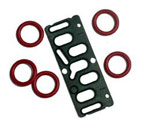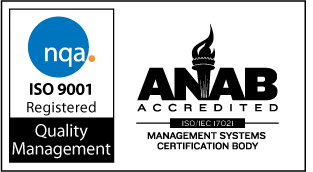Tip:
Abrasion O-Rings
Resistance,
or abrasion, must be taken into consideration if you are
designing o-rings for dynamic conditions. The rubbing and
scraping of the o-rings will cause abrasion particularly
if the moving parts actually contact the o-rings. The choice
of an elastomer is the major consideration in stopping abrasion.
However, using a harder compound, up to 85 durometer, can
also be effective. You may also need to consider providing
adequate lubrication, using smooth metal finishes and eliminating
contamination from all materials that cause abrasion.
In
general, TFE, FEP, carboxilated nitrile and urethane have
excellent resistance to abrasion; buna-n and FKM fluorocarbon have good resistance; and silicone has poor resistance.
We
often see a failure pattern from abrasion in dynamic o-rings
which are involved in a rotary, reciprocating or oscillating
motion which is characterized by a flattened surface on
one side of the cross section of the o-ring.
Here
is a picture and description of an o-ring that has been
damaged by abrasion. |


